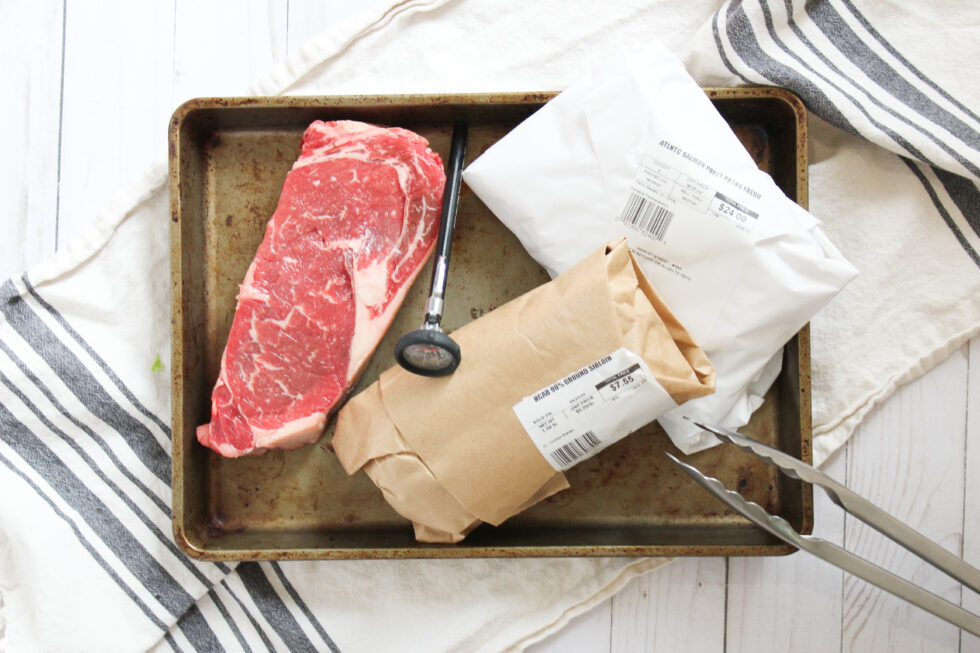
Grilling Temperatures
The weather is warm, the drinks are cold, and the grill is hot. Grilling season is in full swing! With that in mind, it is important to remember grilling safety to enjoy our grilled meals to the fullest. Not only do we want to keep in mind food safety, but let’s learn about the benefits of grilling, direct versus indirect heat, and some new grilling ideas.
Temperature check
First and foremost, checking the internal temperature is crucial for safety because heat kills harmful bacteria and prevents foodborne illness. Use a food thermometer to test the product and place it in the thickest part of the meat before removing it from the grill. Be sure the thermometer does not touch fat or the bone, or this can provide a false reading. If there are multiple pieces of meat, check each one. For patties, such as hamburgers, stick the thermometer through the side rather than from the top. The following are temperature guidelines from the USDA:
| Product | Minimum internal temperature |
| Beef, pork, veal, and lamb (steaks, chops, roasts) | 145°F |
| Ham | 145°F |
| Fish and shellfish | 145°F |
| Ground meat | 160°F |
| Poultry | 155°F |
Benefits of grilling
- Unique flavor- We can thank the Maillard reaction for the distinctive taste of grilled meat. That mouth-watering flavor is something tough to replicate in other forms of cooking.
- Less fat- As meat cooks over the grill, the fat drips down over the flame, which reduces the fat content of the meat and creates a healthier item.
- Less use of condiments- grilled meats tend to be juicer and moister compared to meats of other preparation methods. Having a juicer product decreases the need to add condiments, such as butter or sauces, which adds calories.
Direct vs. indirect heat
Direct heat cooking refers to placing the product directly over the heat source, whether that is charcoal, gas, or wood. Indirect heat cooking refers to having the product next to the heat source. Direct heat cooks food quickly, creates those perfect grill marks, and provides meat with color and crisp. Indirect heat is a slower process. It works well for thicker cuts of meat, so the exterior does not burn. Here is a quick guideline for when to use indirect vs. direct heat:
| Direct heat | Indirect heat |
| Steaks
Hamburgers Pork chops Shrimp Veggies |
Brisket
Ribs Chicken Turkey Roasts Pork shoulder Fish |
Marinades
As much as we love grilling, it also gets a bad rep because the high temperature can cause the formation of heterocyclic amines (HCA) and polycyclic aromatic hydrocarbons (PCA), two unhealthy chemicals which may increase the risk of cancer. Not only do marinades help flavor meat, but research has shown that marinating meat, especially with an acid such as lemon, reduces HCA and PCA formation.
Lean Grilling Ideas
- Pork: pork tenderloin
- Poultry: Skinless chicken or turkey
- Beef: sirloin, top round roast and steak, bottom round roast and steak, top sirloin, T-bone steak
- Fish: tilapia, halibut, cod, haddock
- Non-meat: corn, potatoes, eggplant, zucchini, peaches, tomatoes, asparagus
